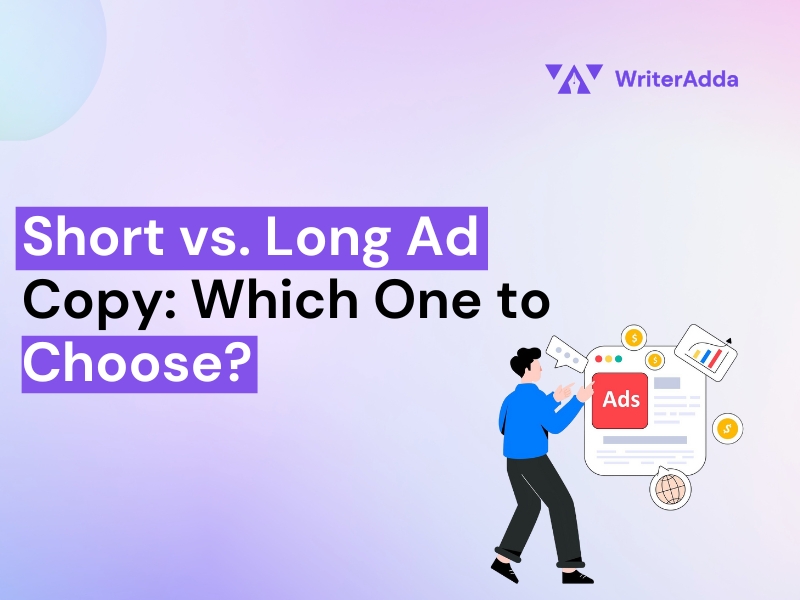Search engine optimization has advanced tremendously during the previous years. The days of flooding search engines with a tonne of thin, subpar content and expecting your rankings to improve are long gone. Today, SEO combines both art and science. To write valuable and appealing content to users and Google’s algorithms, content writers and digital marketers must comprehend search engine ranking variables, prioritize searcher intent, and publish relevant, high-quality material.
Remember that content production and SEO go hand in hand when developing a plan to boost organic traffic to your website.
What is SEO Writing?
Writing for SEO refers to producing material deserving of appearing on the top pages of search engines like Bing, Google, and DuckDuckGo. This calls for performing keyword research, producing high-quality content that reflects user intent, and optimizing your headers for straightforward page crawling.
Here are the strategies you can employ to outperform your rivals in search engine rankings:
Recognize the elements that search engines use to rank websites:
Before you can outrank your competitors, it would be best to understand the key signals that search engines consider when analyzing and ranking content. The four primary ranking determinants are content, HTML tags, links, and site structure.
Content
Google has given content top priority as a ranking element. When creating blog, website, or pillar page content, it should be well-written, clearly handle a topic in-depth, and, most importantly, provide value to the reader.
The seven elements that make up the majority of content ranking considerations, according to SEO best practices, are:
• Quality
• Research
• Keywords
• Freshness
• Multimedia
• Answers
• Depth
Writing competitive content begins with understanding each element’s meaning and how to use them in different fields.
HTML tags, links, site structure
Links, site structure, and HTML elements are the most strongly weighted ranking factor after content. While crawling and indexing your website, search engines look at non-content aspects such as inbound and outbound links, URL structures, page load speed, time on page, and keyword use in tags to identify what your site is about and how to rank it.
Search engine algorithms distribute the most critical content from the top websites to users. When you adopt best practices for HTML, linking, and site structure, search engines find it easier to crawl and index your content. As a result, your material will be indexed and found by search engines more quickly and precisely.
Select the Correct Keywords
In SEO, keywords are pretty important. Before writing, list subjects you know will interest your buyer personas. Next, do keyword research to identify which keywords have the most ranking potential. The keyword you want to target is determined by the content you produce. You can benefit from using keyword research by:
• Discovering the topics being addressed.
• Calculating the volume of searches for each subject.
• Recognizing how difficult it might be to rank an issue
Long-tail keywords with medium to low search volume and minimal competition should be the subject of blog postings. On the other hand, pillar pages and other comprehensive resources can concentrate on shorter-tail seed keywords with substantial search traffic and severe competition. When producing blog content, remember that longer-tail, less competitive keywords have more excellent conversion rates and are easier to rank for.
Determine and capture search intent precisely.
Once you’ve chosen a solid primary keyword target, confirm it by researching searcher intent before deciding how to write about it. When a user types a question into a search box, you should be able to tell what they’re trying to do. Then, you should respond to the subject in a way that properly satisfies their needs.
The following are the four categories of searcher intent:
• Note: The searcher seeks information on a subject to answer a question.
• Do: The searcher is looking for instructions on how to carry out a specific action.
• Website: The searcher is seeking a specific resource.
• Go to the location: The searcher wants to go somewhere for further information.
Decide which of these four categories your primary keyword objective belongs to before you begin writing. Examine the material presently ranking for the term to confirm the category.
Create content that is optimized for Google Featured Snippets.
The Google Featured Snippet is a relatively new addition to search engine functionality. This SERP feature seeks to provide a fast solution to a user’s inquiry. Your material may be optimized to increase your chances of receiving this feature. This is how you do it:
• Use SEMrush or another SERP analysis tool to see if a highlighted snippet is there for your target keyword. One is present in just 12.3% of the searches.
• Determine the structure of the featured snippet. Is it a list, a paragraph written, or a table?
• Ask the question with the sample responses in one of your blog post’s subheadings.
• Respond to the question that follows the subheading. Create a more concise response than the one in the displayed excerpt. Make careful to keep to the existing snippet’s structure.
Refresh Outdated Content
Search engines prioritize fresh material. As previously said, freshness is the fourth most important factor in content ranking. Updating previous blog pieces with more valuable, authoritative content may boost traffic and ranking dramatically.
Here this strategy can be followed:
• Look for blog entries with a strong probability of ranking better for popular keywords.
• Update or edit the article to make it more precise and complete.
• Apply best on-page SEO and conversion optimization practices by incorporating relevant in-line and end-of-post CTAs.
• To allow search engines to re-crawl and re-index the material and publish the optimized article while changing the publish date.
Use The Skyscraper Approach
You may select a material to outrank and create something superior using the Skyscraper technique. It is a link-building and content-writing strategy, but this article focuses on utilizing writing to carry it out. When you’ve found the item you want to outrank, you should:
• Consider why Google prioritized this page above all others in its search results. The content that does well is likely thorough, intriguing, and gives the reader a lot of value. Recognize the elements that made the content successful so you may enhance your own.
• Make something superior to the ranking article. This can be accomplished by lengthening the content, giving it more depth, and keeping it new.
When making changes, be careful and thoughtful. First and foremost, whatever you produce should offer value. When implemented correctly, the Skyscraper technique yields results.
Emphasize high-quality inbound and outbound links.
Links reveal much about your material’s worth, reputation, and caliber to people and search engines. Ensure your blog articles and pillar pages link to reliable, excellent websites. When seeking backlinks, reach out to websites that are authorities on the subject of your content.
Remember that backlinks to your content account for 20.94% of what ranks and what doesn’t on Google, making them one of the ranking factors with the most significant weight. High-quality links may boost your ranks and visitors, whereas spammy and low-quality links can harm your ranking.
Increase User Signals using On-Page Best Practices.
Google has included User Experience Signals in its search algorithms in recent years. Using HTML elements in your content may indirectly impact how these signals are processed. Because HTML tags are one of the first things search engines crawl to understand your content, content producers must include target and LSI keywords in the title, meta description, headers, and the first 100 words. The capacity of these HTML elements to incorporate keywords can improve user experience, bounce rate, dwell duration, and click-through rate. It has been established that solid performance in these areas correlates with higher search engine ranks.
Understanding Site Structure and Technical SEO Best Practises
Although a content writer’s work may not always entail site structure optimization and technical SEO enhancement, it’s essential to understand how these factors might affect how well your content ranks.
The ability of a search engine to index and rank your content quickly and adequately is directly influenced by how your site is constructed, page load speed, security, and crawlability. For example, in recent years, search engines have begun to prioritize websites with topic cluster-driven site architectures, which connect blog pieces with long-tail keywords to in-depth resources or pillar pages with short-tail, high-volume seed keywords.
No matter how well-written your content is, ranking it is practically impossible if your website has an incorrect structure and technical SEO flaws. If your well-written content isn’t producing enough organic visits, hire a developer or technical SEO professional to analyze the health of your website and solve any issues hindering crawlability.
Conclusion
Learning how to write SEO-friendly content for your website will take effort, but it will be worth it. Use these valuable guidelines to develop SEO-friendly content and get the most out of your copywriting efforts. They will work with you to ensure high-quality content produces more shares, leads, links, and repeat visitors.




